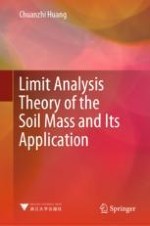2020 | OriginalPaper | Buchkapitel
5. Limit Equilibrium Method
verfasst von : Chuanzhi Huang
Erschienen in: Limit Analysis Theory of the Soil Mass and Its Application
Verlag: Springer Singapore
Aktivieren Sie unsere intelligente Suche, um passende Fachinhalte oder Patente zu finden.
Wählen Sie Textabschnitte aus um mit Künstlicher Intelligenz passenden Patente zu finden. powered by
Markieren Sie Textabschnitte, um KI-gestützt weitere passende Inhalte zu finden. powered by
